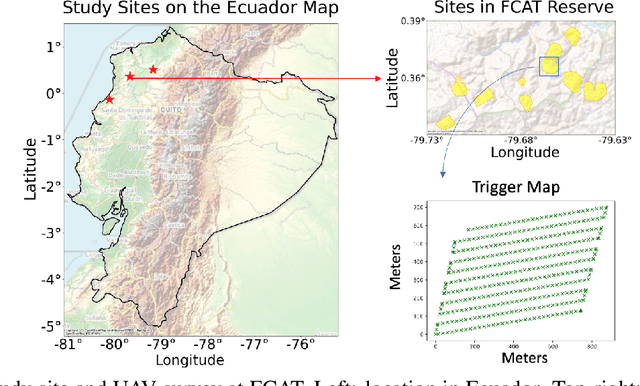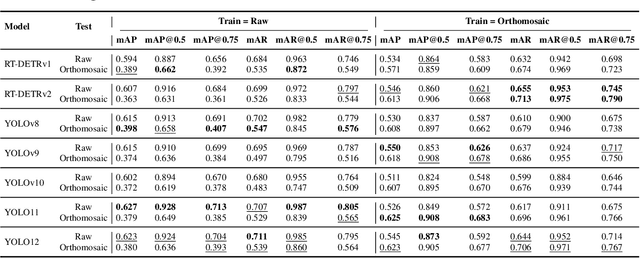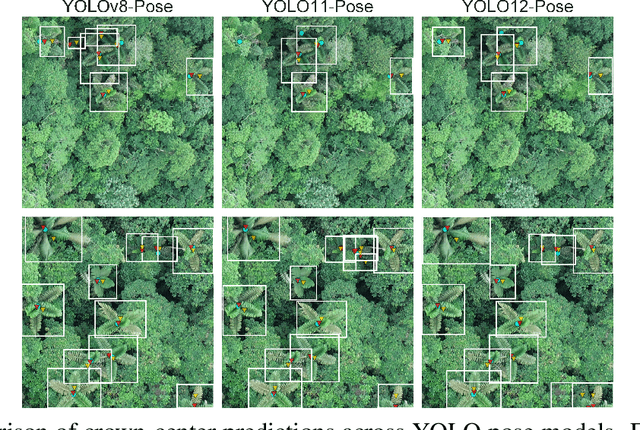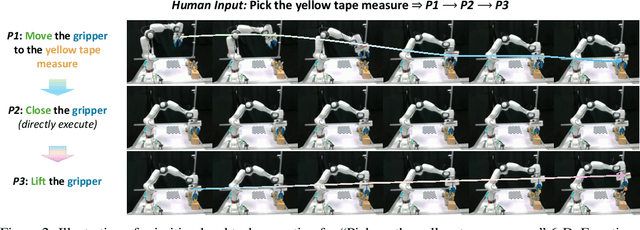Wei Tang
University of Illinois at Chicago
Calibratable Disambiguation Loss for Multi-Instance Partial-Label Learning
Dec 19, 2025Abstract:Multi-instance partial-label learning (MIPL) is a weakly supervised framework that extends the principles of multi-instance learning (MIL) and partial-label learning (PLL) to address the challenges of inexact supervision in both instance and label spaces. However, existing MIPL approaches often suffer from poor calibration, undermining classifier reliability. In this work, we propose a plug-and-play calibratable disambiguation loss (CDL) that simultaneously improves classification accuracy and calibration performance. The loss has two instantiations: the first one calibrates predictions based on probabilities from the candidate label set, while the second one integrates probabilities from both candidate and non-candidate label sets. The proposed CDL can be seamlessly incorporated into existing MIPL and PLL frameworks. We provide a theoretical analysis that establishes the lower bound and regularization properties of CDL, demonstrating its superiority over conventional disambiguation losses. Experimental results on benchmark and real-world datasets confirm that our CDL significantly enhances both classification and calibration performance.
Non-Linear Trajectory Modeling for Multi-Step Gradient Inversion Attacks in Federated Learning
Sep 26, 2025Abstract:Federated Learning (FL) preserves privacy by keeping raw data local, yet Gradient Inversion Attacks (GIAs) pose significant threats. In FedAVG multi-step scenarios, attackers observe only aggregated gradients, making data reconstruction challenging. Existing surrogate model methods like SME assume linear parameter trajectories, but we demonstrate this severely underestimates SGD's nonlinear complexity, fundamentally limiting attack effectiveness. We propose Non-Linear Surrogate Model Extension (NL-SME), the first method to introduce nonlinear parametric trajectory modeling for GIAs. Our approach replaces linear interpolation with learnable quadratic B\'ezier curves that capture SGD's curved characteristics through control points, combined with regularization and dvec scaling mechanisms for enhanced expressiveness. Extensive experiments on CIFAR-100 and FEMNIST datasets show NL-SME significantly outperforms baselines across all metrics, achieving order-of-magnitude improvements in cosine similarity loss while maintaining computational efficiency.This work exposes heightened privacy vulnerabilities in FL's multi-step update paradigm and offers novel perspectives for developing robust defense strategies.
SAMPO:Scale-wise Autoregression with Motion PrOmpt for generative world models
Sep 19, 2025Abstract:World models allow agents to simulate the consequences of actions in imagined environments for planning, control, and long-horizon decision-making. However, existing autoregressive world models struggle with visually coherent predictions due to disrupted spatial structure, inefficient decoding, and inadequate motion modeling. In response, we propose \textbf{S}cale-wise \textbf{A}utoregression with \textbf{M}otion \textbf{P}r\textbf{O}mpt (\textbf{SAMPO}), a hybrid framework that combines visual autoregressive modeling for intra-frame generation with causal modeling for next-frame generation. Specifically, SAMPO integrates temporal causal decoding with bidirectional spatial attention, which preserves spatial locality and supports parallel decoding within each scale. This design significantly enhances both temporal consistency and rollout efficiency. To further improve dynamic scene understanding, we devise an asymmetric multi-scale tokenizer that preserves spatial details in observed frames and extracts compact dynamic representations for future frames, optimizing both memory usage and model performance. Additionally, we introduce a trajectory-aware motion prompt module that injects spatiotemporal cues about object and robot trajectories, focusing attention on dynamic regions and improving temporal consistency and physical realism. Extensive experiments show that SAMPO achieves competitive performance in action-conditioned video prediction and model-based control, improving generation quality with 4.4$\times$ faster inference. We also evaluate SAMPO's zero-shot generalization and scaling behavior, demonstrating its ability to generalize to unseen tasks and benefit from larger model sizes.
From Orthomosaics to Raw UAV Imagery: Enhancing Palm Detection and Crown-Center Localization
Sep 15, 2025



Abstract:Accurate mapping of individual trees is essential for ecological monitoring and forest management. Orthomosaic imagery from unmanned aerial vehicles (UAVs) is widely used, but stitching artifacts and heavy preprocessing limit its suitability for field deployment. This study explores the use of raw UAV imagery for palm detection and crown-center localization in tropical forests. Two research questions are addressed: (1) how detection performance varies across orthomosaic and raw imagery, including within-domain and cross-domain transfer, and (2) to what extent crown-center annotations improve localization accuracy beyond bounding-box centroids. Using state-of-the-art detectors and keypoint models, we show that raw imagery yields superior performance in deployment-relevant scenarios, while orthomosaics retain value for robust cross-domain generalization. Incorporating crown-center annotations in training further improves localization and provides precise tree positions for downstream ecological analyses. These findings offer practical guidance for UAV-based biodiversity and conservation monitoring.
Learning Primitive Embodied World Models: Towards Scalable Robotic Learning
Aug 28, 2025



Abstract:While video-generation-based embodied world models have gained increasing attention, their reliance on large-scale embodied interaction data remains a key bottleneck. The scarcity, difficulty of collection, and high dimensionality of embodied data fundamentally limit the alignment granularity between language and actions and exacerbate the challenge of long-horizon video generation--hindering generative models from achieving a "GPT moment" in the embodied domain. There is a naive observation: the diversity of embodied data far exceeds the relatively small space of possible primitive motions. Based on this insight, we propose a novel paradigm for world modeling--Primitive Embodied World Models (PEWM). By restricting video generation to fixed short horizons, our approach 1) enables fine-grained alignment between linguistic concepts and visual representations of robotic actions, 2) reduces learning complexity, 3) improves data efficiency in embodied data collection, and 4) decreases inference latency. By equipping with a modular Vision-Language Model (VLM) planner and a Start-Goal heatmap Guidance mechanism (SGG), PEWM further enables flexible closed-loop control and supports compositional generalization of primitive-level policies over extended, complex tasks. Our framework leverages the spatiotemporal vision priors in video models and the semantic awareness of VLMs to bridge the gap between fine-grained physical interaction and high-level reasoning, paving the way toward scalable, interpretable, and general-purpose embodied intelligence.
Measuring Informativeness Gap of (Mis)Calibrated Predictors
Jul 16, 2025Abstract:In many applications, decision-makers must choose between multiple predictive models that may all be miscalibrated. Which model (i.e., predictor) is more "useful" in downstream decision tasks? To answer this, our first contribution introduces the notion of the informativeness gap between any two predictors, defined as the maximum normalized payoff advantage one predictor offers over the other across all decision-making tasks. Our framework strictly generalizes several existing notions: it subsumes U-Calibration [KLST-23] and Calibration Decision Loss [HW-24], which compare a miscalibrated predictor to its calibrated counterpart, and it recovers Blackwell informativeness [Bla-51, Bla-53] as a special case when both predictors are perfectly calibrated. Our second contribution is a dual characterization of the informativeness gap, which gives rise to a natural informativeness measure that can be viewed as a relaxed variant of the earth mover's distance (EMD) between two prediction distributions. We show that this measure satisfies natural desiderata: it is complete and sound, and it can be estimated sample-efficiently in the prediction-only access setting. Along the way, we also obtain novel combinatorial structural results when applying this measure to perfectly calibrated predictors.
Tuning the Right Foundation Models is What you Need for Partial Label Learning
Jun 05, 2025Abstract:Partial label learning (PLL) seeks to train generalizable classifiers from datasets with inexact supervision, a common challenge in real-world applications. Existing studies have developed numerous approaches to progressively refine and recover ground-truth labels by training convolutional neural networks. However, limited attention has been given to foundation models that offer transferrable representations. In this work, we empirically conduct comprehensive evaluations of 11 foundation models across 13 PLL approaches on 8 benchmark datasets under 3 PLL scenarios. We further propose PartialCLIP, an efficient fine-tuning framework for foundation models in PLL. Our findings reveal that current PLL approaches tend to 1) achieve significant performance gains when using foundation models, 2) exhibit remarkably similar performance to each other, 3) maintain stable performance across varying ambiguity levels, while 4) are susceptible to foundation model selection and adaptation strategies. Additionally, we demonstrate the efficacy of text-embedding classifier initialization and effective candidate label filtering using zero-shot CLIP. Our experimental results and analysis underscore the limitations of current PLL approaches and provide valuable insights for developing more generalizable PLL models. The source code can be found at https://github.com/SEU-hk/PartialCLIP.
Disentangling Language and Culture for Evaluating Multilingual Large Language Models
May 30, 2025Abstract:This paper introduces a Dual Evaluation Framework to comprehensively assess the multilingual capabilities of LLMs. By decomposing the evaluation along the dimensions of linguistic medium and cultural context, this framework enables a nuanced analysis of LLMs' ability to process questions within both native and cross-cultural contexts cross-lingually. Extensive evaluations are conducted on a wide range of models, revealing a notable "CulturalLinguistic Synergy" phenomenon, where models exhibit better performance when questions are culturally aligned with the language. This phenomenon is further explored through interpretability probing, which shows that a higher proportion of specific neurons are activated in a language's cultural context. This activation proportion could serve as a potential indicator for evaluating multilingual performance during model training. Our findings challenge the prevailing notion that LLMs, primarily trained on English data, perform uniformly across languages and highlight the necessity of culturally and linguistically model evaluations. Our code can be found at https://yingjiahao14. github.io/Dual-Evaluation/.
The Rise of Parameter Specialization for Knowledge Storage in Large Language Models
May 22, 2025Abstract:Over time, a growing wave of large language models from various series has been introduced to the community. Researchers are striving to maximize the performance of language models with constrained parameter sizes. However, from a microscopic perspective, there has been limited research on how to better store knowledge in model parameters, particularly within MLPs, to enable more effective utilization of this knowledge by the model. In this work, we analyze twenty publicly available open-source large language models to investigate the relationship between their strong performance and the way knowledge is stored in their corresponding MLP parameters. Our findings reveal that as language models become more advanced and demonstrate stronger knowledge capabilities, their parameters exhibit increased specialization. Specifically, parameters in the MLPs tend to be more focused on encoding similar types of knowledge. We experimentally validate that this specialized distribution of knowledge contributes to improving the efficiency of knowledge utilization in these models. Furthermore, by conducting causal training experiments, we confirm that this specialized knowledge distribution plays a critical role in improving the model's efficiency in leveraging stored knowledge.
Blind Restoration of High-Resolution Ultrasound Video
May 20, 2025Abstract:Ultrasound imaging is widely applied in clinical practice, yet ultrasound videos often suffer from low signal-to-noise ratios (SNR) and limited resolutions, posing challenges for diagnosis and analysis. Variations in equipment and acquisition settings can further exacerbate differences in data distribution and noise levels, reducing the generalizability of pre-trained models. This work presents a self-supervised ultrasound video super-resolution algorithm called Deep Ultrasound Prior (DUP). DUP employs a video-adaptive optimization process of a neural network that enhances the resolution of given ultrasound videos without requiring paired training data while simultaneously removing noise. Quantitative and visual evaluations demonstrate that DUP outperforms existing super-resolution algorithms, leading to substantial improvements for downstream applications.
 Add to Chrome
Add to Chrome Add to Firefox
Add to Firefox Add to Edge
Add to Edge